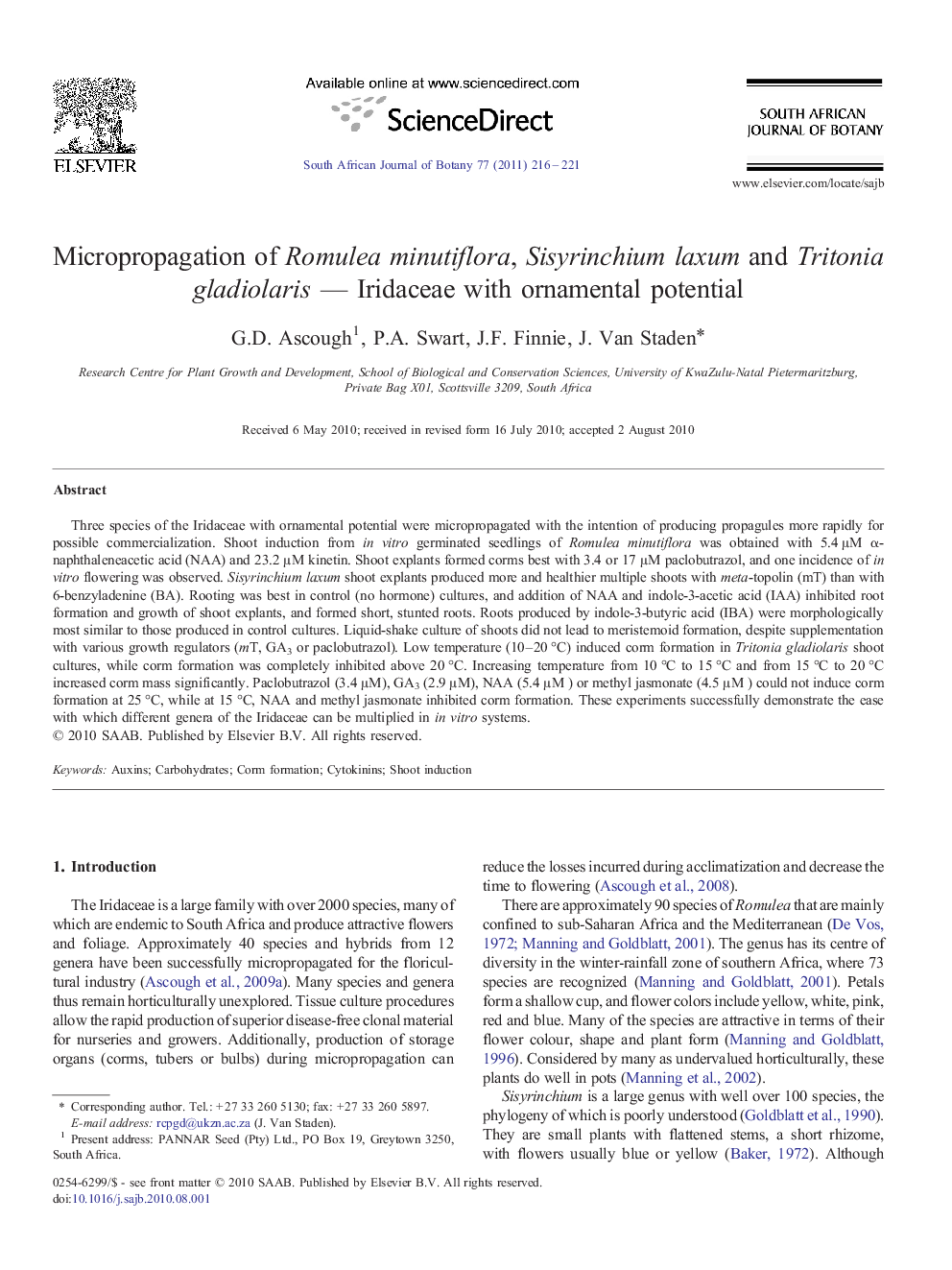| Article ID | Journal | Published Year | Pages | File Type |
|---|---|---|---|---|
| 4521263 | South African Journal of Botany | 2011 | 6 Pages |
Abstract
Three species of the Iridaceae with ornamental potential were micropropagated with the intention of producing propagules more rapidly for possible commercialization. Shoot induction from in vitro germinated seedlings of Romulea minutiflora was obtained with 5.4 μM α-naphthaleneacetic acid (NAA) and 23.2 μM kinetin. Shoot explants formed corms best with 3.4 or 17 μM paclobutrazol, and one incidence of in vitro flowering was observed. Sisyrinchium laxum shoot explants produced more and healthier multiple shoots with meta-topolin (mT) than with 6-benzyladenine (BA). Rooting was best in control (no hormone) cultures, and addition of NAA and indole-3-acetic acid (IAA) inhibited root formation and growth of shoot explants, and formed short, stunted roots. Roots produced by indole-3-butyric acid (IBA) were morphologically most similar to those produced in control cultures. Liquid-shake culture of shoots did not lead to meristemoid formation, despite supplementation with various growth regulators (mT, GA3 or paclobutrazol). Low temperature (10-20 °C) induced corm formation in Tritonia gladiolaris shoot cultures, while corm formation was completely inhibited above 20 °C. Increasing temperature from 10 °C to 15 °C and from 15 °C to 20 °C increased corm mass significantly. Paclobutrazol (3.4 μM), GA3 (2.9 μM), NAA (5.4 μM ) or methyl jasmonate (4.5 μM ) could not induce corm formation at 25 °C, while at 15 °C, NAA and methyl jasmonate inhibited corm formation. These experiments successfully demonstrate the ease with which different genera of the Iridaceae can be multiplied in in vitro systems.
Related Topics
Life Sciences
Agricultural and Biological Sciences
Agronomy and Crop Science
Authors
G.D. Ascough, P.A. Swart, J.F. Finnie, J. Van Staden,
